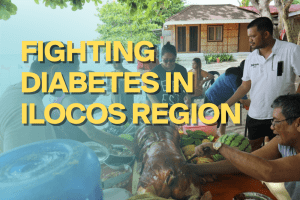Despite the variety of cultures found in Asia, one topic seems to be perceived similarly in most countries, and that is mental health disorders.
It has become crucial to cater to the mental health needs of individuals in society. This is where community psychiatry comes into place. Today, in conversation with Dr Euriz Calmerin, we learn more about community psychiatry.
What constitutes Community Psychiatry?
Community psychiatry focuses on the detection, prevention and early treatment and rehabilitation of emotional and behavioural disorders as found in a community. It comprises the principles and practices needed to provide mental health services for a population. By first
- Establishing the population-based needs for treatment and care provided
- Providing a service system linking a wide range of resources of adequate capacity operating in an accessible location
- By delivering evidence-based treatments to people with mental disorders.
What are the types of work in community psychiatry?
There is a wide range of work when it comes to community psychiatry which involves:
- Educating the public on mental health issues,
- Educating other health workers in providing mental health services to the community,
- Establishing programs to provide the members of the community with avenues for psychological support,
- Establishing mental health education programs,
- Providing training for community health professionals such as physicians, clinicians, nurses, midwives and community volunteers,
- Also encouraging community members to get psychological evaluation regularly,
- And liaise with governmental and non-governmental organisations to provide mental health services to the community.
In 2018, the WHO launched a Mental Health Gap Action Programme (MHGAP) which was used to train the health workers in the Philippines to bridge the gap between available resources and those in need of mental health facilities. Through this training, the healthcare workers were able to acquire tools to effectively manage treatments for persons with neurological and substance use disorders, using the algorithm for clinical decision-making.
Why is it important for a community to have mental health services?
Mental health services in the community promote accessibility, acceptability, affordability and scalability of services; it also promotes open-mindedness, and treatment adherence, and increases compliance to therapy and the likelihood of a desired clinical outcome. Community mental health services play an official role in mental health awareness, reduce stigma and discrimination, support recovery and make mental health services available for all.
According to the Philippines Statistics Authority 2010, around 14% of the population of 1.4 million Filipinos with disabilities were identified to have a mental disorder. The WHO data published in 2020, states that the suicide rate in the Philippines reached 2325 (0.34% of total deaths). These deaths can be prevented by increasing access the population has to mental health services in the form of community psychiatry.
What are some challenges that you face in your daily work?
The increasing number of patients with psychosocial and psychological issues has been challenging for me, as a lot of patients are queuing and are not accommodated regularly. This is also due to the shortage of mental health workers nationally. Another challenge is the shortage of facilities in provinces and municipalities and in the city which makes us prioritise patients in need of emergency services.
A lot of patients need to wait and the family may undergo caregiver burnout. It is also quite challenging to encourage patients and their families to get psychological consultations due to stigma and discrimination. Therefore, they revert to unproven traditional treatments instead of getting professional help. These are some barriers to their health-seeking behaviour. Low budget allocations for mental health cause the patient to bear the expenses of the mental health services out of their pockets making them less compliant with medications, and prone to relapsing.
What is the most rewarding aspect of your work?
Several psychotic patients have been chained or imprisoned in their own homes by family members who have likely given up on them; when these patients come to the clinic and begin treatment, their psychotic symptoms decrease and at times disappear. Patients can return to their daily activities and have improved quality of life, this makes my work fulfilling. These patients also help me learn more about empathy, compassion, patience and the importance of not giving up on one’s self.
What is your advice to the public when it comes to mental health in the community?
Each one of us faces different challenges in life. To the general public, let us be more empathic, compassionate and kind to the people around us. Talk to the members of society suffering from mental health disorders, acknowledge their feelings, show concern and emotion, advocate for them and volunteer for these programs. Importantly, people should not stigmatise and indiscriminate individuals with mental health issues. If one identifies a community member suffering from the aforementioned problems, one should refer them to the rural health agencies.
Let us not forget that there is no health without mental health!













